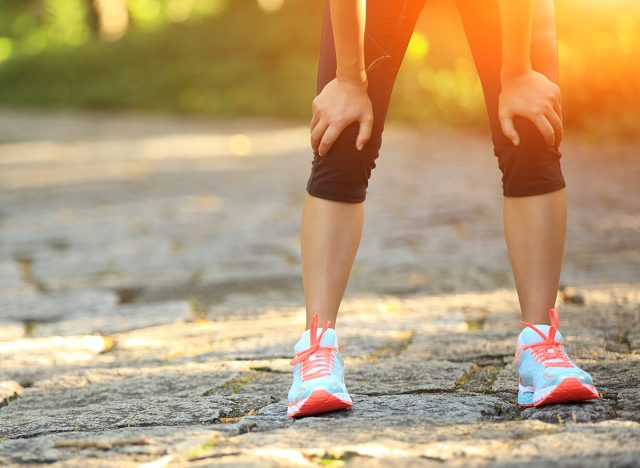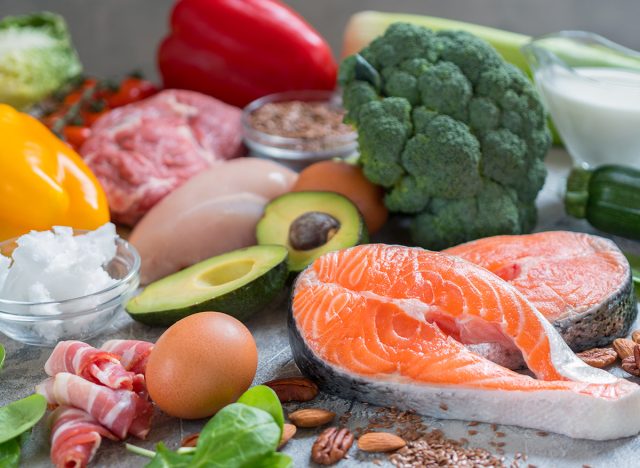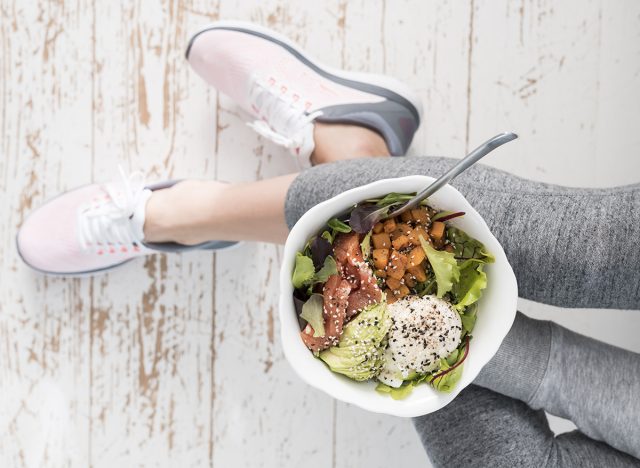2 Ways to Shed Inches Off Your Waist That "Most Personal Trainers Aren't Talking About"
Fitness influencer and online coach Jenna Rizzo claims she has helped hundreds of women "shed inches off their waist without crash dieting." She regularly shares videos via TikTok and Instagram, offering simple tricks and tips on how to lose weight, get in shape, and transform your body without going to extremes. Recently, Rizzo revealed two surprising tips "what most personal trainers aren't talking about" that allow you to transform your body.
She Was Focusing on the Wrong Things

In a viral TikTok video, Rizzo shows off her awe-inspiring body transformation. "It took me a long time to get from point A to point B because I was focusing on the wrong things. I'll tell you the two things you really need to focus on," she says. "You can make a lot faster progress than me." The first surprising tip? Don't speed through exercises. "Slow down your workout routine," she advises. "A lot of us think doing really long workouts five, six times a week is going to be really good for us, but it actually could be doing more harm than good." How so? She explains that when you work out, "you're actually creating tears in your muscles." If you want them to "grow back bigger and stronger," you "have to give them proper rest," she explains. "I saw a major difference in my physique when I stopped training six days a week and went down to four."
Related: This Quick & Easy Two-Minute Workout Tones Your Body Fast
Allow Your Muscles to Rest

The American Council on Exercise (ACE) agrees. They explain that exercise creates two types of stress on your muscles. The first is metabolic stress, "that comes from depleting the energy stored in individual muscle cells," and also mechanical stress, "created by physical damage to the structures of muscle proteins."
"While the body experiences metabolic or mechanical stress during exercise, it's during the recovery period after the exercise that the body repairs the muscle proteins and replaces the glycogen (stored glucose in liver and muscle tissue) used to fuel the workout," they say.
How long of a rest should you give your muscles? One small study determined that the ideal rest time is between 48-72 hours for muscles worked.
Stop Slashing Your Calories

The next tip has to do with diet. Instead of slashing your calories, "you're going to need to eat more than you think," she says. "These 1,200 calorie days, low carb diets, intermittent fasting, keto, are all pushed onto women," Rizzo explains, blasting diet culture.
Related: I Lost 80 Pounds Eating What I Love & Here Are My Simple Tricks
Focus on Fueling Your Body

"Our goal is to get strong and build muscle and create a nice tone," she adds. Rizzo explains that you need to focus on fueling your body "better than what just traditional diet culture tells us to eat."
"I have coached hundreds of women, not a single one of them, had their calories below 1500 every single day," she adds.
Eat and Rest
@jennaaaamarieeYou can transform your body by doing less in the gym & more in the kitchen.♬ original sound – Jenna Rizzo | Weight Loss
While weight loss requires a calorie deficit, consuming adequate protein is crucial when it comes to building muscle mass. One small study published in the American Journal of Clinical Nutrition divided a group of 20 men into two categories. One followed a higher protein diet than the other, while both groups followed a reduced calorie diet paired with intense exercise. At the end of four weeks the higher protein group lost more body fat and gained more muscle than the other group. Moral of the story, according to Rizzo? "Eat your food and take your rest."
💪🔥Body Booster: Contrary to popular belief, eating less and exercising more isn't the key to transforming your body. Fueling up with the foods you need to build muscle and allowing your body to recover from workouts will help you achieve your best body ever.





